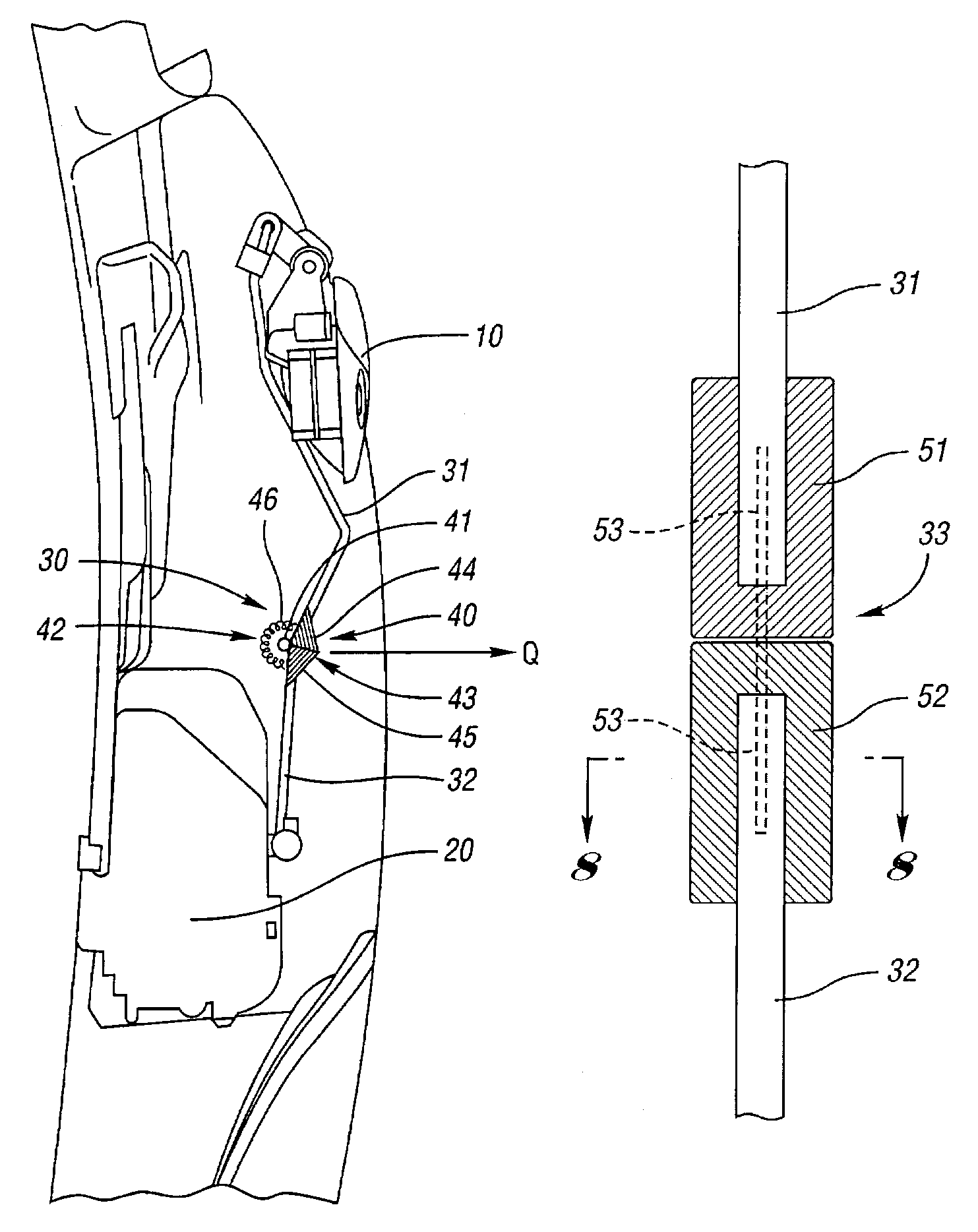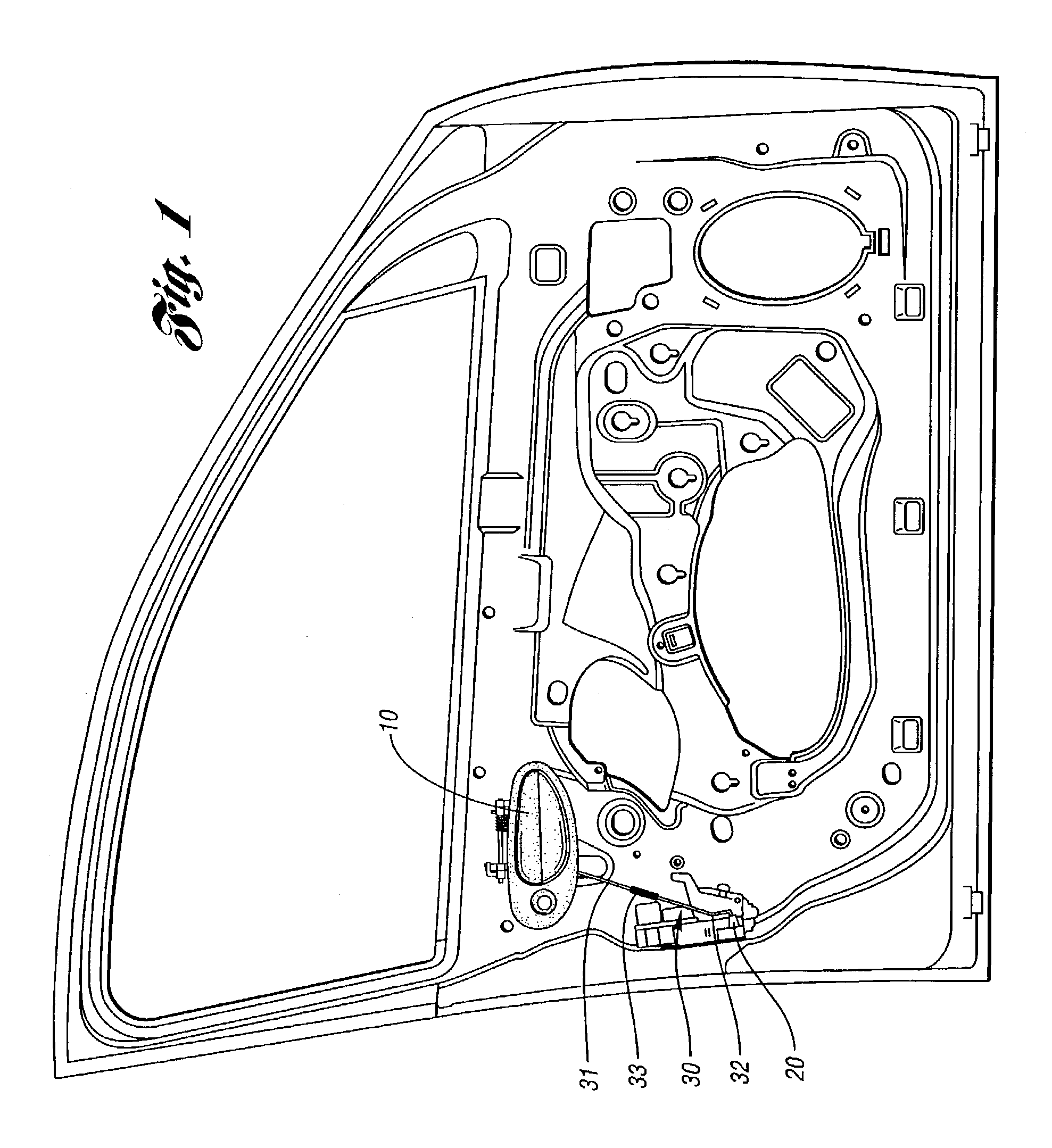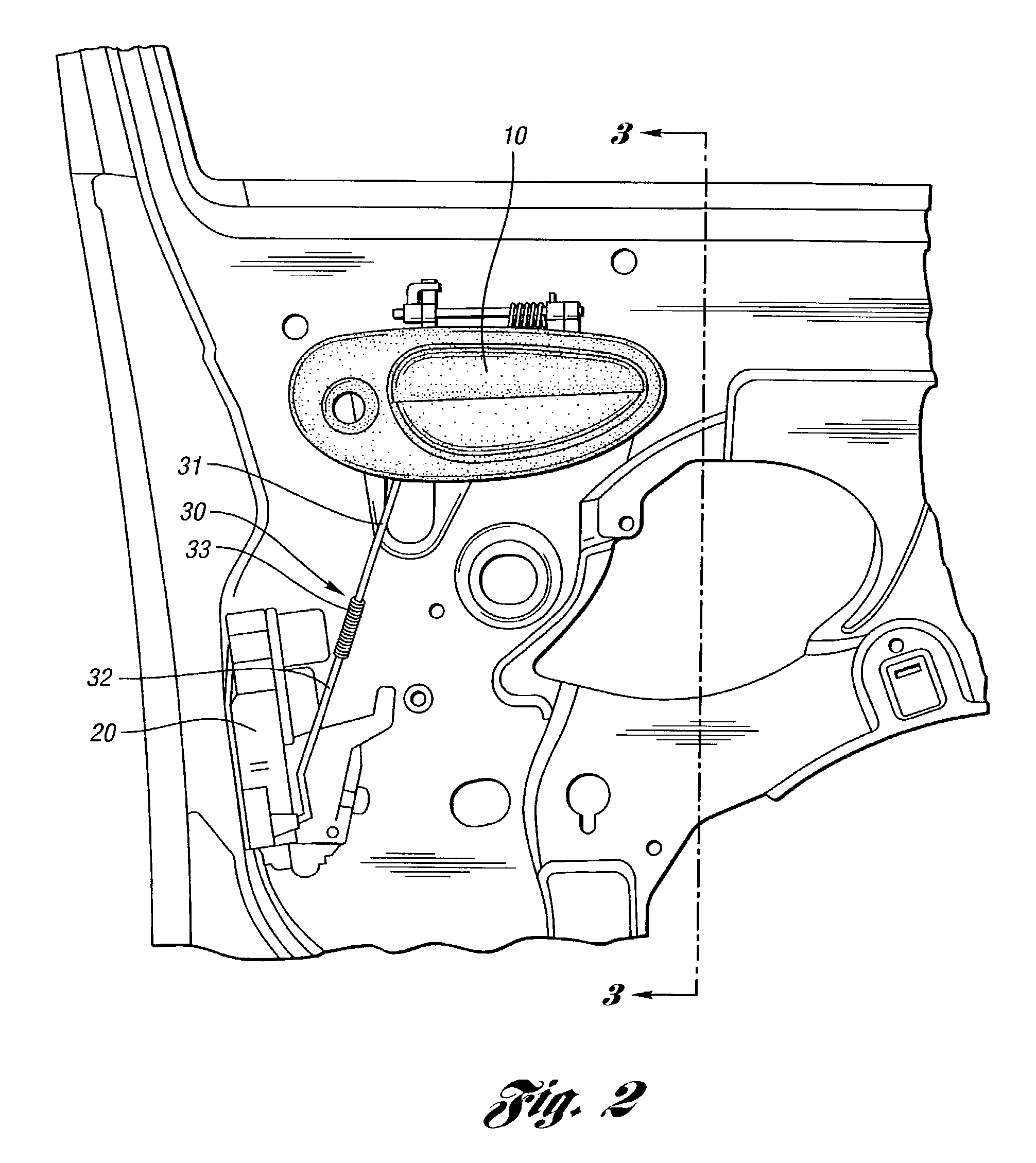Vehicle door latching mechanism having an improved link rod
a technology of latching mechanism and vehicle door, which is applied in the field of latching mechanism, can solve the problems of a number of undesirable situations, a relatively complex mechanism for opening the door of a modern vehicle, and a large number of components, and achieves the effects of improving the safety of passengers
- Summary
- Abstract
- Description
- Claims
- Application Information
AI Technical Summary
Benefits of technology
Problems solved by technology
Method used
Image
Examples
Embodiment Construction
[0028]The present invention provides a simple but elegant solution to the limitations of the prior art as discussed above. The present invention is based on a link rod design that is easy and inexpensive to manufacture, unlikely to fail, and simple to repair and replace if necessary. Such a link rod comprises a first section and a second section joined by a lateral connector.
[0029]As used herein, a lateral connector is a connecting device that permits the fist section and the second section to move laterally while permitting, at most, minimal longitudinal motion of the first and second sections relative to each other.
[0030]If an accident occurs that involves a lateral impact into a door having a door handle, link rod, and latch mechanism according to the present invention, the force generated by the impact acts on the first section and the second section joined by the lateral connector prior to acting on the door handle causing the link rod to buckle at the point where the first se...
PUM
 Login to View More
Login to View More Abstract
Description
Claims
Application Information
 Login to View More
Login to View More - R&D
- Intellectual Property
- Life Sciences
- Materials
- Tech Scout
- Unparalleled Data Quality
- Higher Quality Content
- 60% Fewer Hallucinations
Browse by: Latest US Patents, China's latest patents, Technical Efficacy Thesaurus, Application Domain, Technology Topic, Popular Technical Reports.
© 2025 PatSnap. All rights reserved.Legal|Privacy policy|Modern Slavery Act Transparency Statement|Sitemap|About US| Contact US: help@patsnap.com



